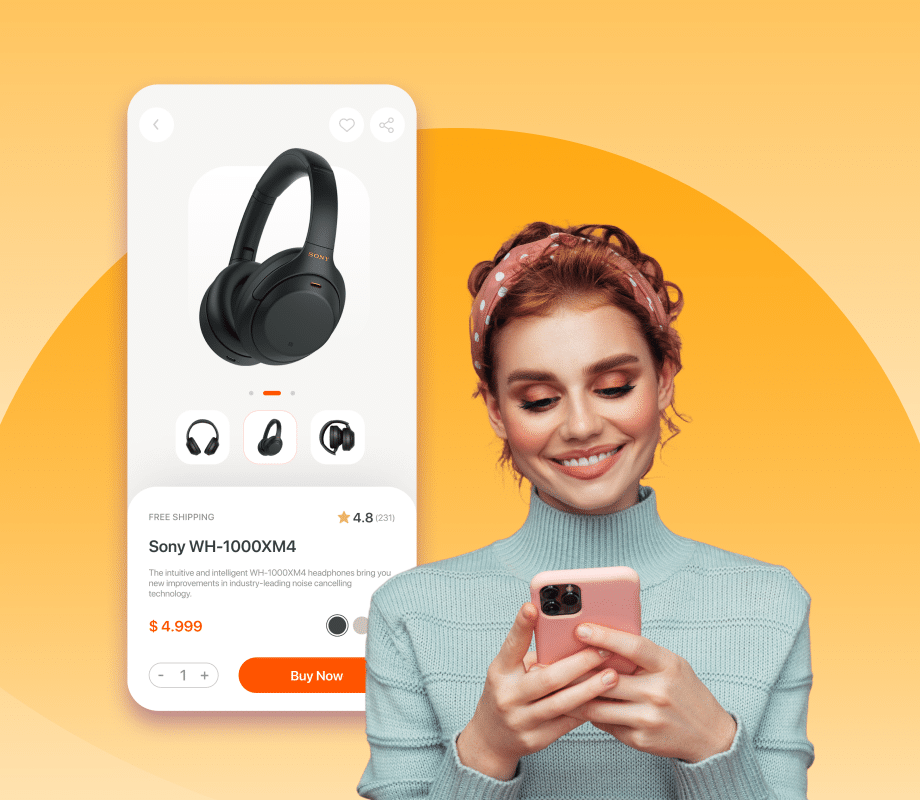Today’s consumers want highly personalized services and digital experiences. In fact, about 3 out of 4 users get frustrated when they do not get that convenience. Personalization is, therefore, crucial in today’s eCommerce-dominated marketing landscape.
The key requirement for personalization is coherent customer data. There are many data management solutions that process and analyze customer data to help you create personalized marketing strategies, targeted ad campaigns, and optimal experiences for your customers.
The most popular of these data management solutions are:
- Customer Relationship Management systems (CRMs)
- Data Management Platforms (DMP)
- Customer Data Platforms (CDPs)
CDP, CRM, and DMP all have a common modus operandi—analyzing and compiling data collected from multiple sources to create detailed customer profiles. These profiles are used to optimize and personalize products, services, adverts, customer relationships, and other marketing-based functions.
At the same time, these platforms also have some fundamental differences. You need to know these differences to be able to choose the solution that is best for your business. Choosing the ‘wrong’ solution can affect your business operations and ROI, as all three options can be expensive to implement.
Let’s delve deeper into each tool to understand the differences.
Retail Customer Data Platform: The All-round Marketing Solution
A CDP is used to aggregate customer data from a wide array of sources to create a coherent, comprehensive, and evolving profile for each customer. These sources include your website, mobile app, social media pages, Point of Sale (POS) systems, live chats, and email marketing systems, among others.
A CDP gathers first-party data from the channels it is connected to and the systems it is integrated with. The data can be of different types: behavioral, demographic, technographic, transactional, and more.
The platform uses this data to create real-time customer profiles and build a comprehensive customer database. It gives you a 360-degree, unified view of a customer.
More importantly, a CDP centralizes this database, making it accessible to other enterprise systems that handle different functions like demand forecasting, CRM, data analytics, marketing automation, personalization, marketing campaign creation, A/B testing, and content curation.
All the while, the system keeps collecting new data to update millions of customer profiles seamlessly and simultaneously.
Data Management Platform: The Prospective Customer Magnet
DMPs are used to collect and organize data from first-, second-, and third-party sources to build individual customer profiles. The aggregated data can then be shared with other business or marketing technology systems.
The data is specifically used to drive targeted advertising and personalization on different digital channels. That doesn’t mean that a DMP independently manages customer data and creates advertising campaigns. It acts as an intermediate entity between data sources and the places where the content will be used.
Now, the key differences between a DMP customer profile and a CDP customer profile are:
- Both the data and profiles in DMPs are anonymized. These profiles are accessible to marketers not as identifiable individuals but only as customer segments.
- The data and profiles can be stored for a limited time only.
For instance, say a marketer is looking to create a targeted marketing campaign for a certain demographic of people. They can use the DMP to find data for the segment they want to target, such as the number of women below the age of 30 currently using a Samsung Galaxy phone.
Once the DMP system gathers and runs this data through various analytical tools, marketers can target the customers in that segment. All the individuals in a segment will receive the same marketing messages, emails, and adverts on social media pages or other online touchpoints.
As a result, where a CDP is geared more towards profiling and serving existing customers, the primary use of a DMP is winning prospective customers with data-driven online advertisements.
Customer Relationship Management (CRM) — The Relationship Optimizer
A CRM uses a series of data collection, management, and analytical tools to manage relationships with customers. This system uses AI and machine learning-based tools for pattern recognition and in-depth data analytics. Chatbots—which are essentially AI-powered customer service executives—are prime examples of CRM tech.
Where a DMP is primarily used for targeted advertising, CRM is associated with sales teams. One of the main uses of CRM is analyzing data in user reviews and feedback to develop better products over time.
Like CDP and DMP, this solution too dynamically gathers customer data, but the purpose is to evolve and improve the quality of services. You can employ CRM systems to simplify customer interactions, resolve post-purchase grievances, and optimize the functionality, reliability, and durability of products and services.
A CRM platform enables you to align your sales and marketing operations through integration with CDP, DMP, and other similar tools. You can achieve this by tracking individual customer journeys by sourcing first- and second-party customer data from feedback forms, surveys, responses to emails, activity on your website, call center communications, cookies, and others.
Due to today’s cutting-edge competition, many products and services have similar quality, capabilities, and functionalities. So, customer opinions and purchase decisions are formed based on their marketing interactions and overall experience with your business. CRM tools help optimize these interactions.
Key Differences Between CRM, CDP & DMP
As is clear, there are several overlapping aspects among the three solutions. However, there are five areas where the three are different:
Data sources: All three platforms can process first-, second-, and third-party data. First-party data refers to information received directly from customers, second-party data refers to others’ (such as a partner or reseller) first-party data, and third-party data comes from various sources such as browsers, devices, website cookies, and mobile apps. CRMs and CDPs mainly process first-party data, while DMPs focus on third-party data.
Data storage and retention: DMPs only store the data for specific periods, while CDPs and CRMs store the data indefinitely unless the customer or the business decides to wipe it off. The duration and amount of data that can be stored also depends on the platform’s pricing. However, all three systems must comply with data protection guidelines in the region they are in (such as GDPR in Europe).
Customer profiles: CRMs and CDPs process personally identifiable information (PII) to create identifiable customer profiles, while DMPs create anonymized customer profiles. CDPs can bring together and analyze PII in conjunction with anonymous third-party data to identify the individual and give you a 360-degree unified customer snapshot.
CRMs cannot track unidentified users, so customers’ unidentified digital journeys (where they do not sign in to the browser or website account, for example) cannot be unified with their known profile.
Who the tools are for: A CRM is primarily used by sales teams, a DMP by performance marketing teams, and a CDP is for any marketer or digital merchandiser.
Purpose of data collection: CRMs are used for customer relationship management, customer profile building, and helping the sales and marketing tools deal with feedback and product and service development. DMPs are specific to advertising and segment-level personalization.
Retail customer data platforms can be used to manage customer relationships and engagement levels, in targeted marketing and ad campaigns, for 1:1 personalization—whatever your need is. All this is possible because of its ability to build unified customer profiles that evolve with each interaction.
As you can see, CDP has the widest array of capabilities of the three. Therefore, a CDP can carry out the functions that form the basis of the core functionalities of DMP and CRM, apart from its own capabilities.
Also read: 5 marketing challenges a customer data platform cdp can solve
Why Businesses Must Have a CDP Solution
A CDP is a well-rounded customer data management solution for many reasons.
-
First, only a CDP helps you unify data collected from diverse sources, including your legacy databases and other digitized records, to relentlessly update customer profiles in real time. You can also integrate CRMs and DMPs into a CDP to help augment its first-party customer data.
-
Second, the centralization of data lets you break down any existing data silos between different sub-departments within your marketing department. This lets employees and managers across the board participate in marketing-related strategizing, thereby making decision-making more balanced and data-driven.
-
Third, the 360-degree customer profile lets your business optimize marketing campaigns and other engagement efforts by enabling hyper-personalization for individual customers.
After all, dynamic personalization not only improves customer retention over time, but also revenue by 5-15% and cost efficiency by 10-20%, according to McKinsey.
-
More than anything, a CDP helps you make the most of every interaction between you and your customers across every channel and touchpoint. A CDP is more than just a data collection and unification tool–it enables audience activation and campaign orchestration across different communication channels.
The above-mentioned capabilities make Algonomy’s Real-time CDP a trusted and reliable solution among major retailers and brands worldwide. It is built for retail with online and offline data management capabilities, and tracks customer behavior using over 1,200 out-of-the-box measures and dimensions.
Further, it uses AI-ML algorithms to create micro-segments and uncovers marketing opportunities throughout the customer lifecycle.
 in Sweden from 7 - 8 October 2025. Pre-book a meeting to connect with our
product experts.
in Sweden from 7 - 8 October 2025. Pre-book a meeting to connect with our
product experts.










